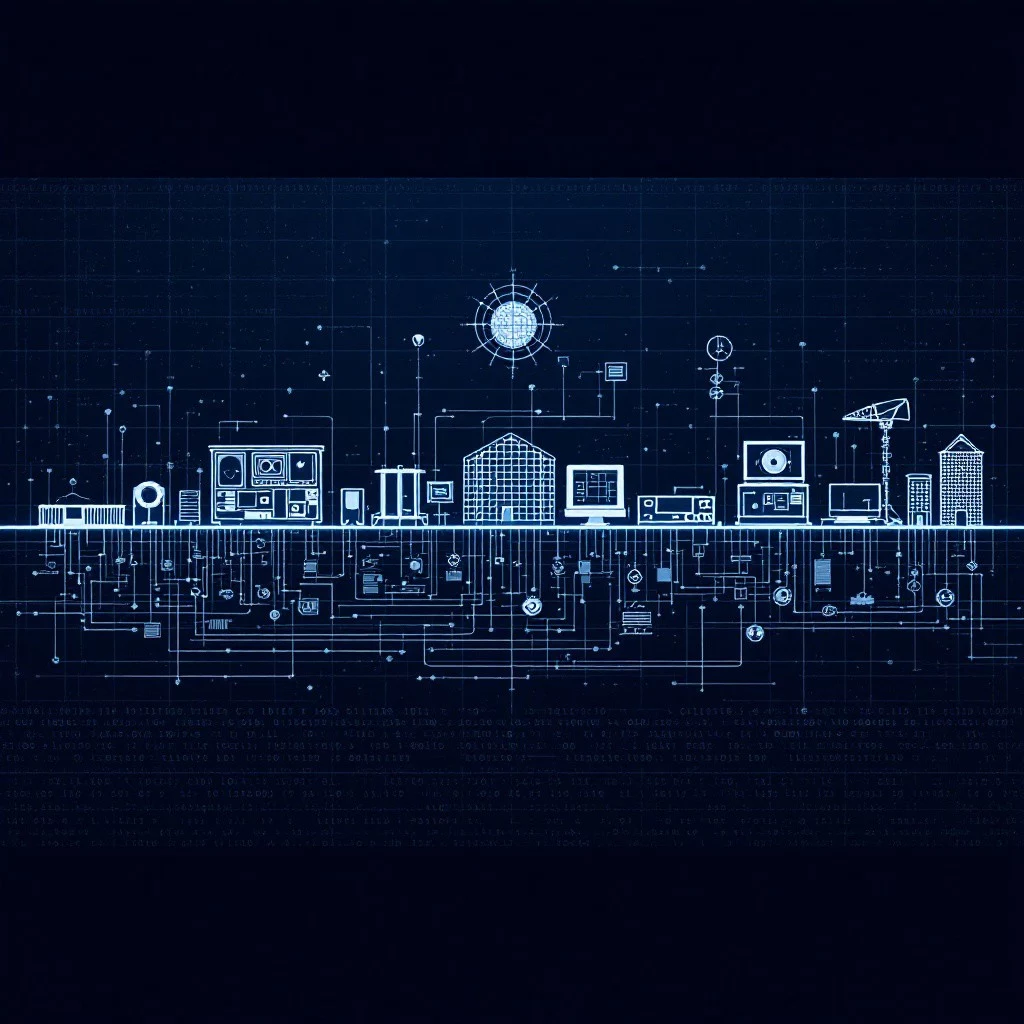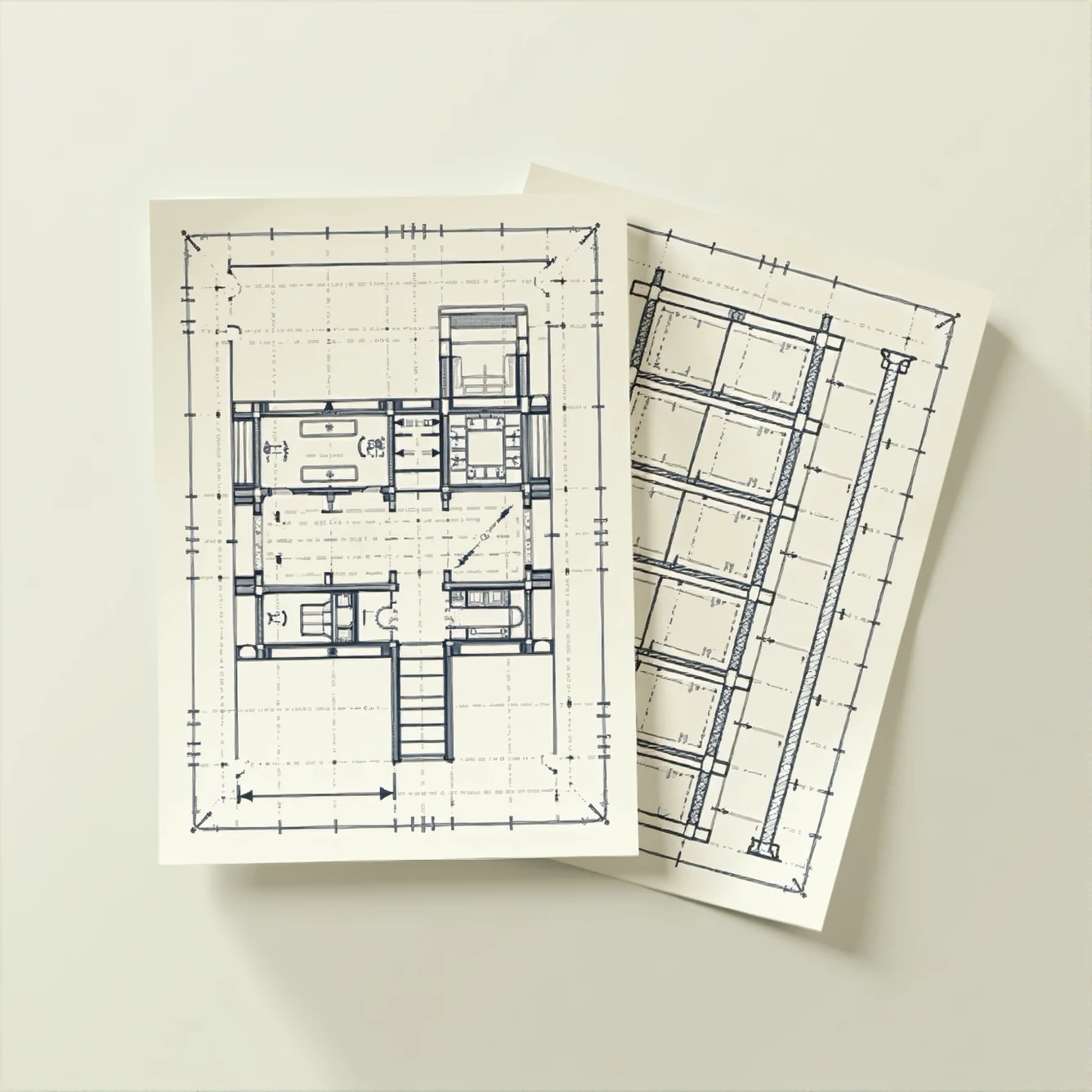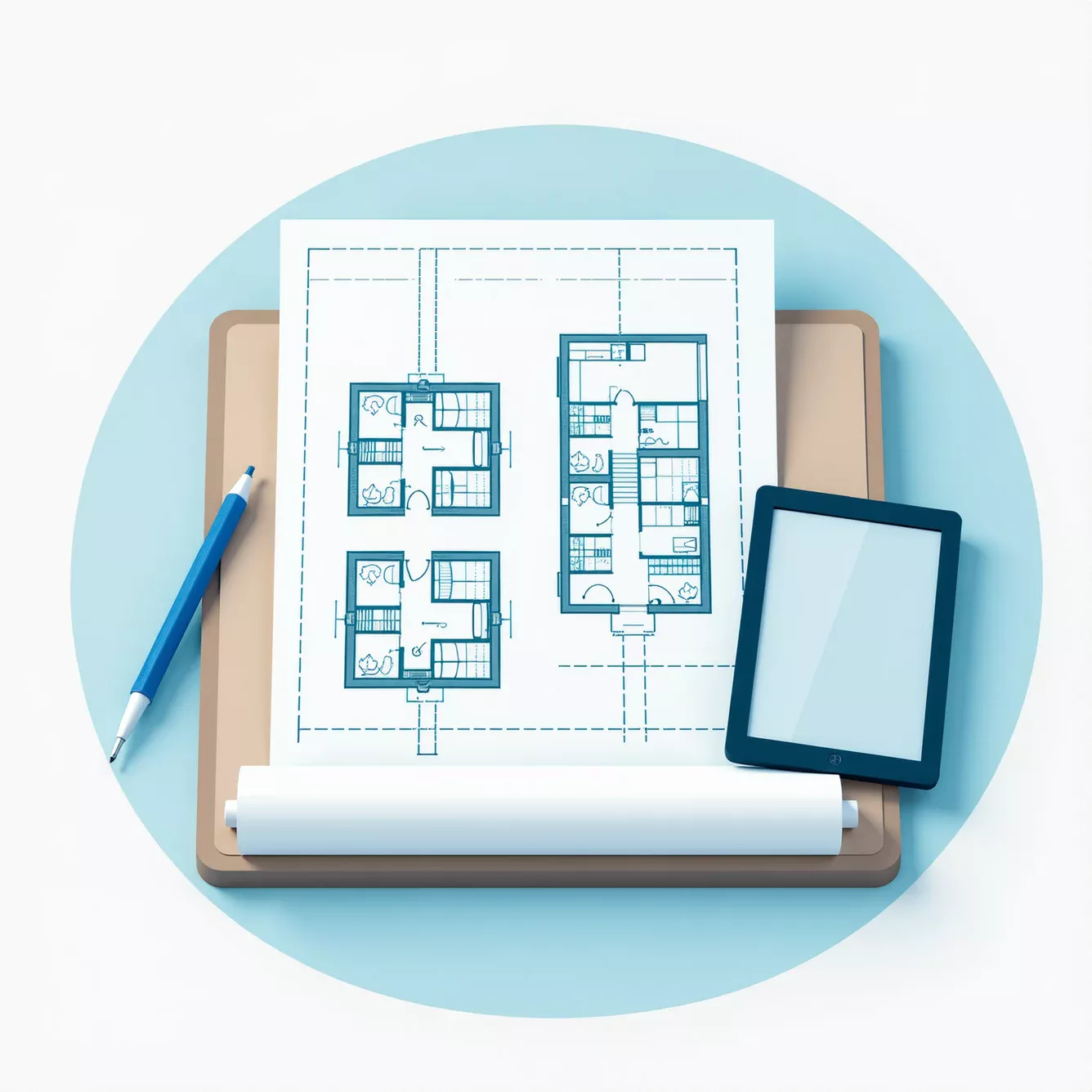
The History of Digitalization in Architecture: From Paper to Pixels
The gleaming glass towers of modern cities stand as monuments not just to architectural vision, but to one of the profession's most dramatic transformations: the shift from paper to pixels. This journey from hand-drawn plans to complex digital models represents more than just a change in tools – it marks a fundamental revolution in how we imagine, design, and construct our built environment.
The Age of Paper: Where It All Began
In 1938, Frank Lloyd Wright's Fallingwater was still being drafted by hand. Each line was carefully considered, each modification requiring new sheets of paper. The process was meticulous, time-consuming, and demanded exceptional skill. Yet this era of traditional drafting laid the foundation for principles that would later become crucial in digital design.
The drafting table era wasn't just about drawing – it was about problem-solving through physical means. Architects developed techniques that would later influence digital tools:
- Overlay drafting for design iterations
- Physical templates for repeated elements
- Manual coordination between different drawing scales
- Hand-lettered annotations and dimensions
These fundamental practices wouldn't disappear with digitalization; they would evolve.
The First Digital Revolution: 1960s-1970s
The seeds of architectural digitalization were planted in an unlikely place: the aerospace industry. Ivan Sutherland's Sketchpad, developed at MIT in 1963, introduced concepts we take for granted today:
- Digital drawing with a light pen
- Geometric constraints
- Object copying
- Basic automation
While revolutionary, early CAD systems were massive, expensive, and limited to major corporations and research institutions. Architecture firms watched with interest but continued working with their trusted drafting tables.
The Personal Computer Revolution: 1980s
The 1980s brought two crucial developments that would change architecture forever: affordable personal computers and AutoCAD's release in 1982. Suddenly, digital drafting became accessible to smaller firms.
This period saw the first real battle between traditional and digital methods. Early adopters faced significant challenges:
- Expensive hardware requirements
- Limited software capabilities
- Resistance from traditionally trained architects
- File compatibility issues
- Data storage limitations
Yet the benefits were becoming clear:
- Faster revisions
- Perfect reproducibility
- Improved accuracy
- Digital storage
- Easier sharing of drawings
The CAD Evolution: 1990s
The 1990s marked the true turning point. As computers became more powerful and software more sophisticated, digital tools began offering capabilities that surpassed traditional methods:
- Layered drawings
- Automated dimensioning
- Digital libraries
- Network collaboration
- 3D modeling capabilities
This era saw the emergence of specialized architectural software, moving beyond generic CAD tools to programs designed specifically for building design. The industry was beginning to understand that digitalization wasn't just about replicating paper processes – it was about reimagining them.
The BIM Revolution: 2000s
Building Information Modeling (BIM) represented more than just another technological advance – it fundamentally changed how architects approached design. Instead of drawings, architects were now creating intelligent digital models containing vast amounts of information:
- Material specifications
- Cost data
- Performance characteristics
- Construction sequencing
- Facility management information
This shift had profound implications for the profession. Today, ENGINYRING's scan-to-BIM service helps bridge this gap, converting existing buildings into detailed BIM models, allowing older structures to benefit from modern digital tools.
The Cloud Revolution: 2010s
Cloud computing transformed architectural collaboration. Projects could now be accessed and modified from anywhere, leading to:
- Real-time collaboration
- Global team integration
- Improved version control
- Reduced hardware requirements
- Enhanced data security
The Present: Where We Stand Today
Modern architectural digitalization represents a fusion of multiple technologies and approaches. ENGINYRING's sketch-to-digital service exemplifies this evolution, combining traditional sketching's creativity with digital precision and efficiency.
Current digital workflows typically involve:
- Complex 3D modeling
- Parametric design
- Environmental analysis
- Virtual reality visualization
- Automated documentation
- Digital collaboration tools
ENGINYRING's drafting services demonstrate how professional drafting has evolved, combining traditional expertise with modern digital capabilities.
The Hidden Story: Software Evolution
Behind the visible changes in architectural practice, software development played a crucial role:
Early CAD (1980s)
- Basic 2D drawing
- Simple geometric shapes
- Limited file formats
- Basic printing capabilities
Mid-Period CAD (1990s)
- Enhanced 2D capabilities
- Basic 3D modeling
- Multiple file formats
- Improved printing options
- Network compatibility
Modern Integrated Systems
- Complex 3D modeling
- Parametric design
- Real-time rendering
- Cloud integration
- Mobile accessibility
The Human Impact
The digitalization of architecture has profoundly affected those working in the field:
Traditional Architects
Many experienced architects had to adapt to new tools while maintaining their design expertise. Their journey teaches us valuable lessons about combining traditional knowledge with digital capabilities.
Digital Natives
Younger architects entered the field already familiar with digital tools but needed to learn the fundamental principles that preceded them.
Support Professionals
New roles emerged: BIM managers, digital design specialists, and visualization experts.
Lessons from History
The digitalization journey offers valuable insights for today's practitioners:
1. Integration Over Replacement
Successful digitalization didn't replace architectural principles – it enhanced them. Modern services like ENGINYRING's digitalization solutions demonstrate how traditional and digital approaches can work together.
2. Skill Preservation
While tools changed, core architectural skills remained crucial:
- Spatial understanding
- Design principles
- Technical knowledge
- Problem-solving abilities
3. Adaptation Strategies
Successful firms learned to:
- Implement changes gradually
- Maintain flexibility
- Invest in training
- Preserve valuable traditional practices
- Embrace new possibilities
The Cost of Progress
Digitalization brought challenges:
- Initial investment costs
- Training requirements
- Data management needs
- Technology dependence
- Regular updates and maintenance
However, it also delivered benefits:
- Increased efficiency
- Enhanced accuracy
- Improved collaboration
- Greater design possibilities
- Better client communication
Looking Back to Move Forward
Understanding this history helps us appreciate current tools and anticipate future developments. Key lessons include:
1. Tool Evolution
Digital tools evolved to meet architectural needs, not vice versa. Understanding this helps in selecting and implementing new technologies.
2. Workflow Integration
Successful digital adoption always considered existing workflows and gradually improved them.
3. Skill Development
The most successful transitions maintained core architectural skills while building digital capabilities.
Future Implications
This historical perspective helps us understand current trends:
1. Hybrid Approaches
The future likely involves combining multiple tools and approaches, as demonstrated by ENGINYRING's range of digitalization services.
2. Continuous Learning
The history of digitalization shows the importance of ongoing education and adaptation.
3. Preservation of Principles
While tools change, fundamental architectural principles remain crucial.
Conclusion
The digitalization of architecture represents more than just technological progress – it's a story of how a profession reinvented itself while preserving its core principles. Understanding this history helps us appreciate current tools and prepare for future developments.
As we continue to advance, services like those offered by ENGINYRING help bridge the gap between traditional and digital approaches, ensuring that architectural expertise remains relevant regardless of the tools used.
This history reminds us that while tools may change, the fundamental goal of architecture remains constant: creating spaces that enhance human life and experience.









